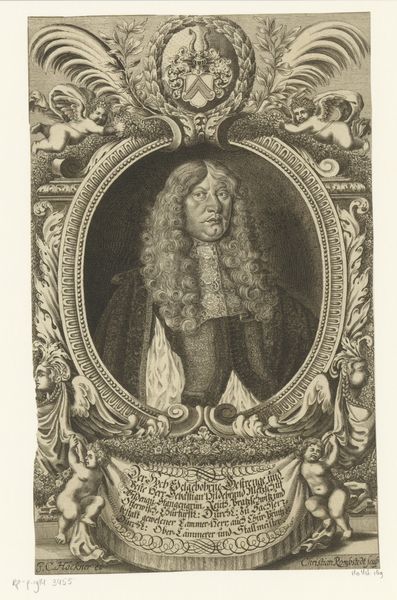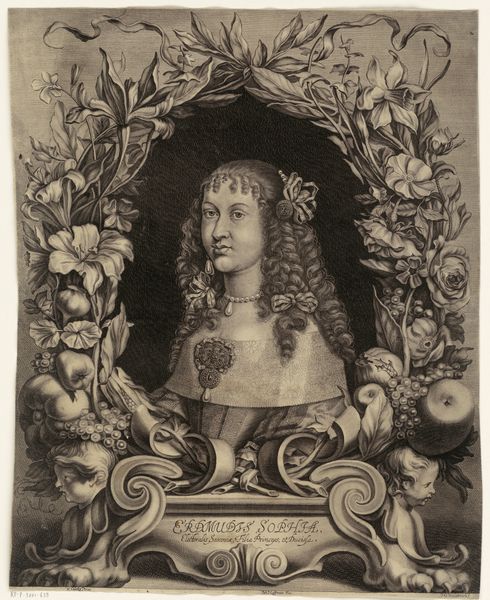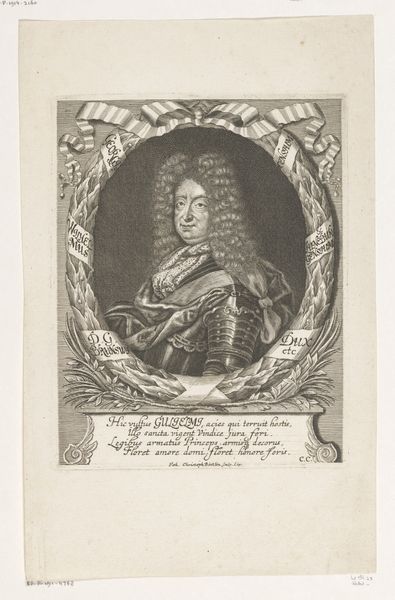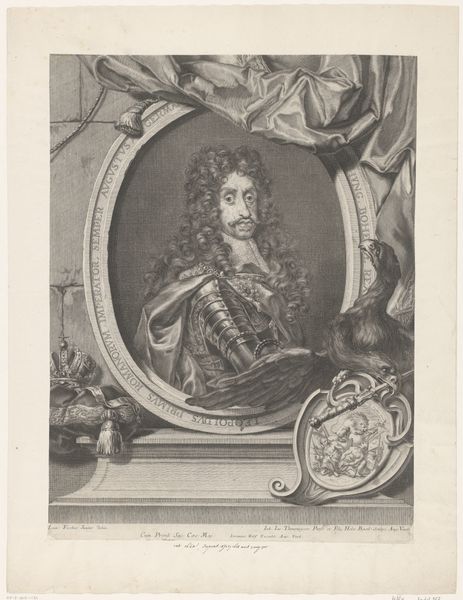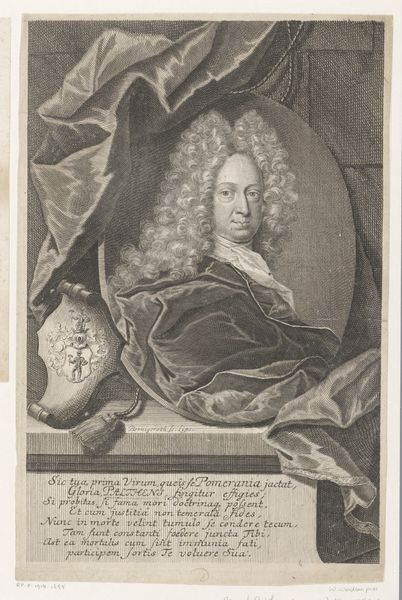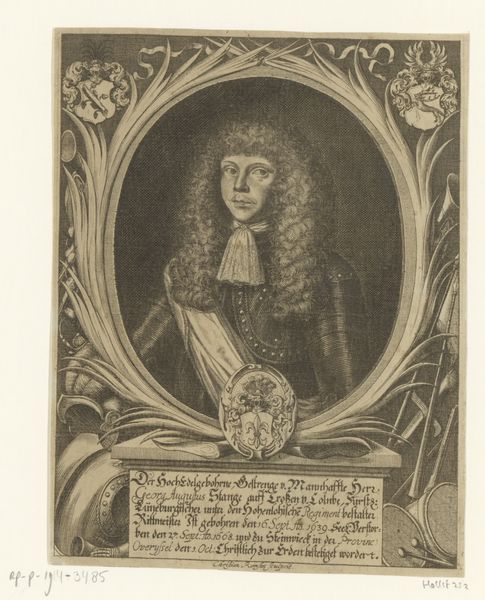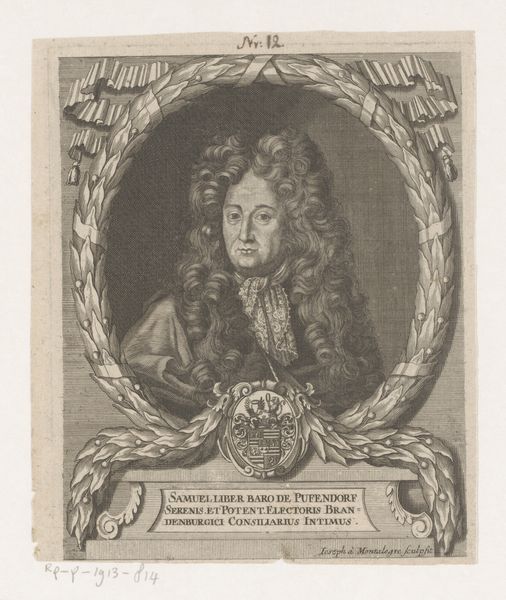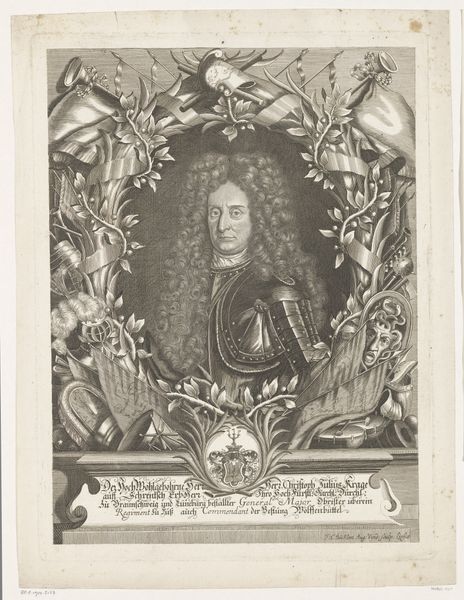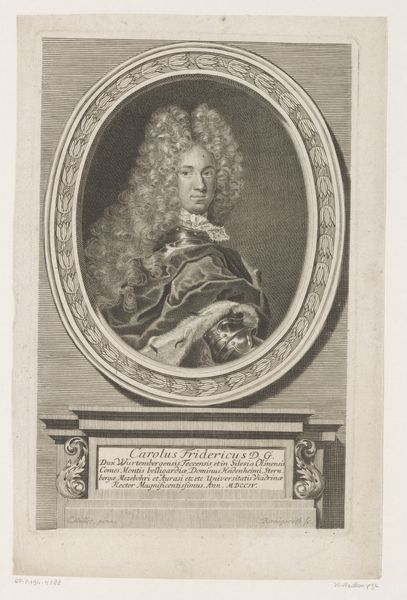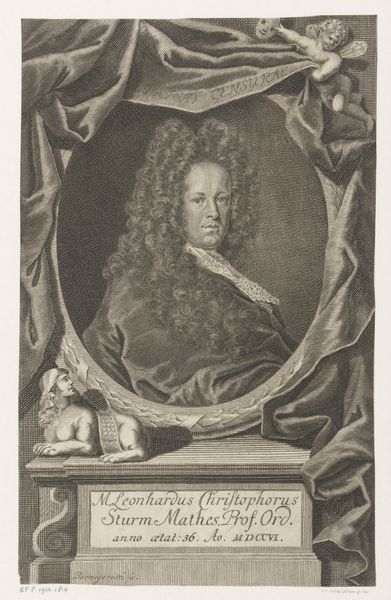
Portret van Christian Ernst, Markgraf von Brandenburg-Bayreuth after 1662
0:00
0:00
print, engraving
#
portrait
#
baroque
# print
#
old engraving style
#
engraving
Dimensions: height 527 mm, width 418 mm
Copyright: Rijks Museum: Open Domain
Curator: Here we have "Portret van Christian Ernst, Markgraf von Brandenburg-Bayreuth," a baroque engraving crafted after 1662 by Johann Georg Waldreich. Look at the intricate floral arrangement encircling the subject. Editor: It's rather grand, almost overwhelmingly so. The detail is quite impressive for an engraving, but I immediately notice the textural contrast between the softness of the floral elements and the formality of his armour. Curator: Absolutely. Flowers, especially in portraits of this era, often carry symbolic meaning. The arrangement likely reflects Ernst's virtues or aspirations, perhaps even dynastic emblems incorporated subtly within. The armour indicates his status, both martial and aristocratic. Editor: I'm struck by the symmetry. The portrait is balanced not just with the florals, but with the sculptural supports below, topped with heraldic beasts and swags of fruit. There’s a strong compositional rigidity here. Curator: Consider the visual vocabulary that would have been immediately legible to viewers then. Each bloom and fruit could speak volumes about the subject's character, his reign, his connections, or hopes for the future. Think about the symbolic language embedded into seemingly decorative choices. Editor: And consider the limitations of the medium! To create this much detail with such clear tonal range required masterful control. Waldreich balances darkness and light meticulously to model Ernst's face and give form to the swirling leaves and lion busts. It reminds me of the careful precision demanded in etching. Curator: Precisely. That precision allows for potent iconography. Ernst’s stern expression, framed by these deliberate symbols, speaks to an ambition far beyond mere aesthetic portraiture; it is an assertion of power, divinely ordained legitimacy, meticulously encoded into visual form. Editor: Ultimately, the success lies in that tension – between the rather rigid, hierarchical meaning, and the evident craft. It elevates the piece, turning it into far more than just a simple representation. Curator: It's a potent blend of image and information, all working towards the reinforcement of Ernst’s position, wouldn't you agree? Editor: A truly effective demonstration of baroque portraiture serving ideological ends with remarkable artistic skill.
Comments
No comments
Be the first to comment and join the conversation on the ultimate creative platform.
